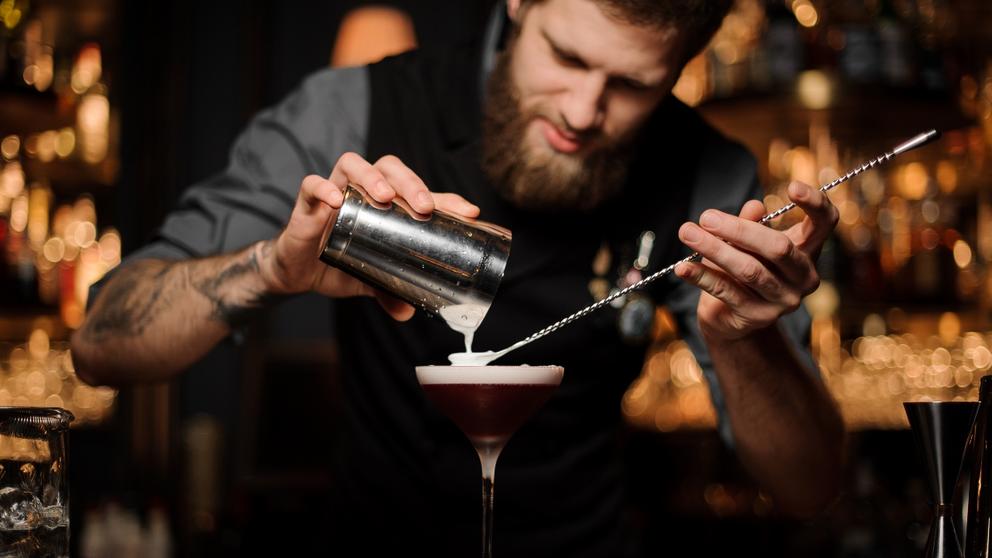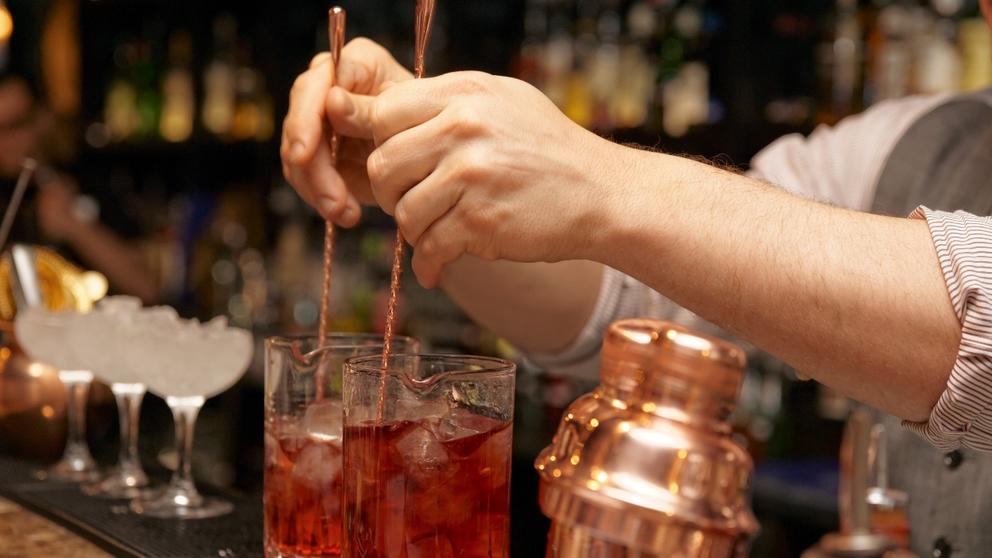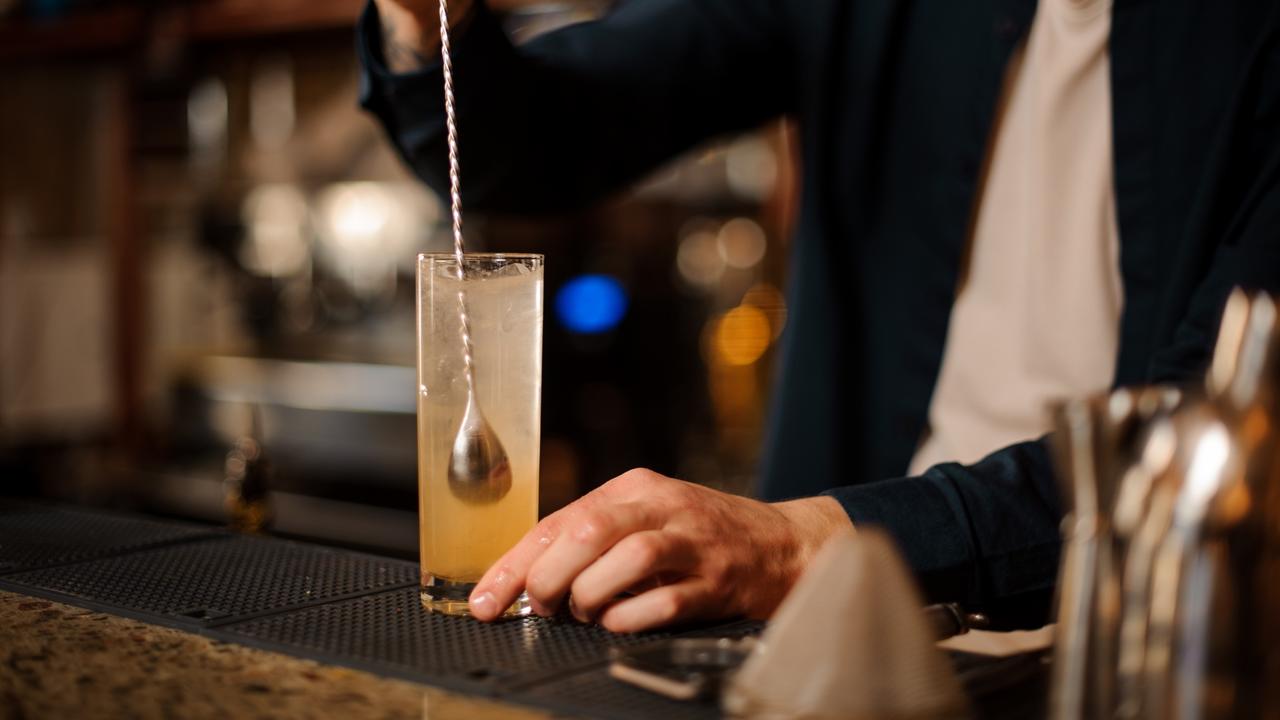The bar spoon is one of the most underrated yet most necessary tools found behind the bar. Bar spoons allow bartenders to mix drinks and integrate ingredients together in a method different to that of shaking.
There are a few types of bar spoons available, yet the basic functionality of them is the same. Read on for more about this understated bar tool...
The history
The spoon itself is one of the oldest eating utensils and was separately developed by multiple cultures around the world. The bar spoon evolved from this once rudimentary cooking and eating tool into two different styles of sophisticated bar tools, both emerging from Europe.
The first was originally called the 'sucket spoon', named after a German desert where fruit was served in a syrup. The spoon had a fork on the opposite end to help one with plucking the fruit from the syrup. This tool migrated to Great Britain where bartenders noticed that their guests could use it to stir and also eat the fruit from their cobbler cocktails. These are the spoons which migrated to the USA and evolved into American bar spoons.
The second iteration of the bar spoon came from France, where it was called a 'mazagran spoon'. Here the spoon was created with a flat muddling head on the opposite end to the bowl to help crush the stubbornly hard sugar that was being used in the coffee drink called the mazagran. These bar spoons are now what we know as European bar spoons.
Bar spoon variations

In addition to the two bar spoons mentioned above, there is a third style of bar spoon called the Japanese bar spoon. The use of bar spoons remain the same no matter which one you use, however each have different elements to utilise. How much liquid a bar spoon holds may also depend on the variation, so keep this in mind.
American bar spoon - A simple bar spoon with the signature twisted handle and a small plastic red cap on the end, opposite the bowl. These types of bar spoons measure 1 standard teaspoon, 5ml.
European bar spoon - Featuring the signature twisted handle of the bar spoon this style has a muddler located on the opposite end to the often flatter bowl. This can be used to muddle sugar and fruits, and to layer cocktails and shots. These bar spoons usually measure 2.5ml of liquid.
Japanese bar spoon - Again, with the bar spoon’s signature twisted handle, Japanese bar spoons are slightly sleeker and more elegant than their Western counterparts. The end, opposite the bowl, often has a pearl shaped weight to assist the user, however, they can be found with small forks for picking out garnishes. This bar spoon holds 2.5ml of liquid.
Bar spoon considerations
Besides these stylistic variations in the different bar spoons, there are a few other elements to consider when selecting your bar spoon.
Length - A bar spoon should be long enough for you to comfortably use without your hand hitting the rim of the glass you’re stirring in. Almost all of them, besides some terribly cheap versions, allow this. Some are much longer than others, like Japanese bar spoons, which can add to the theatre of cocktailing.
Measurement - A bar spoon is a measurement quoted on many recipes and getting these measurements right is always crucial. One bar spoon can be different to another. The measurement, “a bar spoon” is, more often than not, 5ml of what you’re measuring. However some of these, like the European bar spoon, can measure different amounts. Be sure you know what the measurement of your bar spoon is and adjust your recipes accordingly.
Other Functions - Do you want your bar spoon to do more than stir? If so, you may want to look into the different functionalities and tools that are available on the other end of the handle.
Using a bar spoon

Bar spoons can have many uses. Within bartending and cocktail making, there are two main functions of the bar spoon. These are stirring and layering.
Stirring
This technique is by far the most important element of bar spoons. The goal of stirring a drink is to incorporate ingredients whilst simultaneously chilling them. Mixing cocktails this way, instead of using a cocktail shaker, provides you with a smooth elegant texture whilst not clouding the drink.
Look professional and stir with efficiency and consistency when behind the bar. Remember these 5 simple steps for mastering the bar spoon.
1. Fill your stirring vessel almost to the top with ice. Stirring glasses are best used for this bit. Then add your ingredients.
2. Slide the bar spoon down the side of the glass, with the concave side facing inward.
3. Hold the spoon with the stem between two of your fingers, with all your fingers placed on either side of the stem. Some like to hold it between their index and middle finger, others with their middle and ring; it’s whatever is comfortable for you.
4. Now you want to stir the spoon around the perimeter of the stirring glass, keeping the bowl facing inwards. Use your wrist to perform this motion with fluidity and consistency. Don’t force the stir as this will have the spoon jumping around with the ice and not fulfilling its job. This is the “technique” and it's the hardest part to learn, so be sure to practice.
5. Place a strainer over the top of the container and strain your chilled and integrated cocktail into the serving glass. Garnish and serve!
NOTE: The general practice is to stir 30-40 times before pouring. Some like to do 20 stirs in one direction and the rest in the other direction. Stirring and bar spoons are a subjective matter for bartenders.
Layering
The second use of a bar spoon is layering and this is more often used with shots rather than cocktails. The European bar spoon, with its muddler, works really well for this. Follow these three steps to layering below, to layer successfully.
1. Hold the muddler flat to the top of the liquid you wish to “float” your next layer on top of.
2. Pour the next layer slowly, using a speed pourer, onto the muddler. The large surface of the muddler will dissipate the new layer gently on top of the lower layer. When using the spoon end of a bar spoon turn it upside down and place the edge of it where the lower layer meets the glass, holding the spoon as flat as possible.
3. Pour the next layer slowly over the back of the bar spoon, raising it as the layer builds to keep it on top of the top layer.
Once you've mastered layering, learn how to make rainbow shots. Layering is a key part to making rainbow shots, so be sure to check this out.
Common cocktails

There are many classic cocktails that require stirring. The following cocktails are the bartender basics every bartender should know about. They all require excellent stirring ability, so are great to practice with.
- Negroni
- Manhattan
- Martini - most types of Martini are shaken, however.
- Boulevardier
- Sazerac
- Gimlet - can be served shaken or stirred.
- Penicillin
- Rob Roy
- Rusty Nail
Learn more about cocktails in our 'what is a cocktail' blog. We cover cocktail history, recipes and style...
If you feel inspired to be a bartender, check out our EBS Bartender Courses here for more information.

